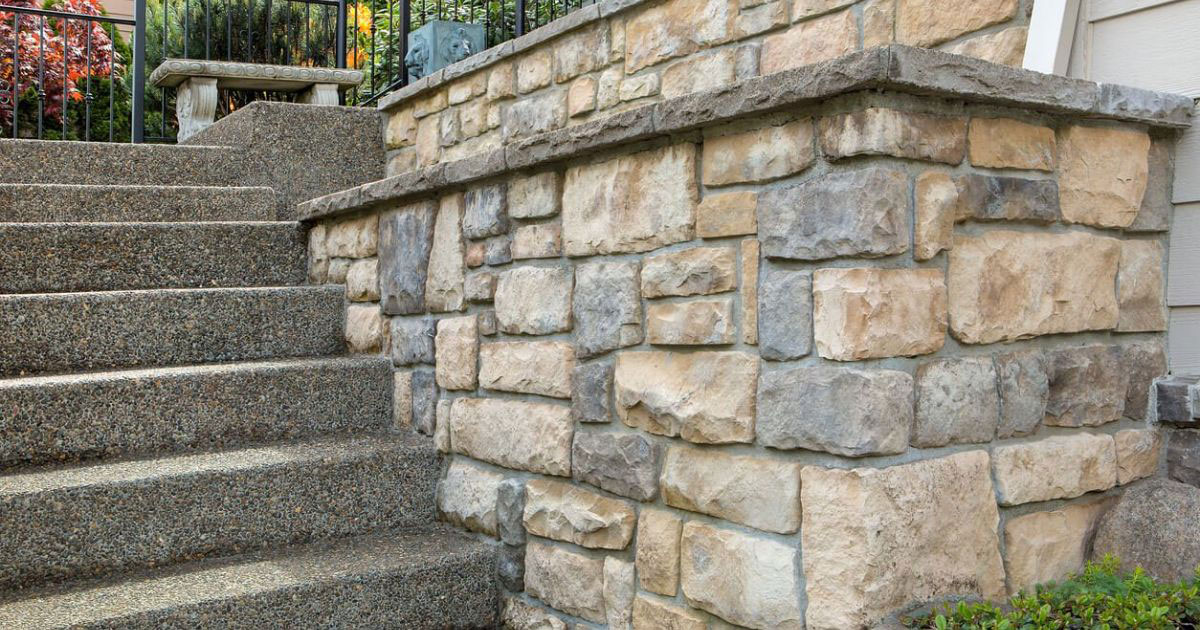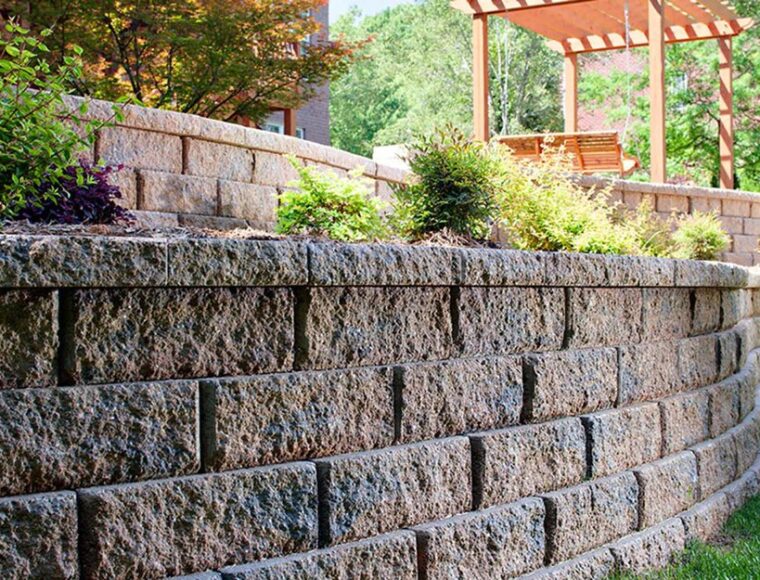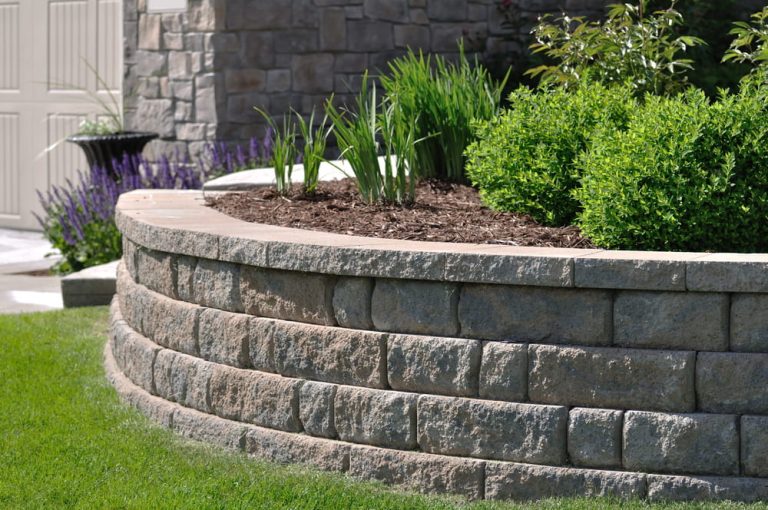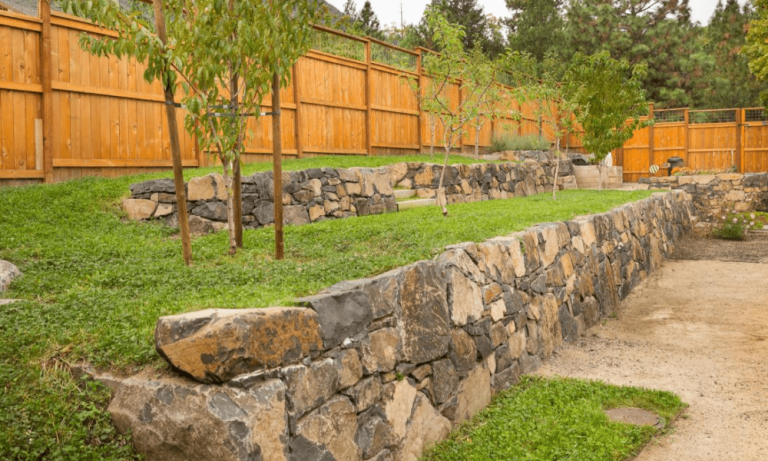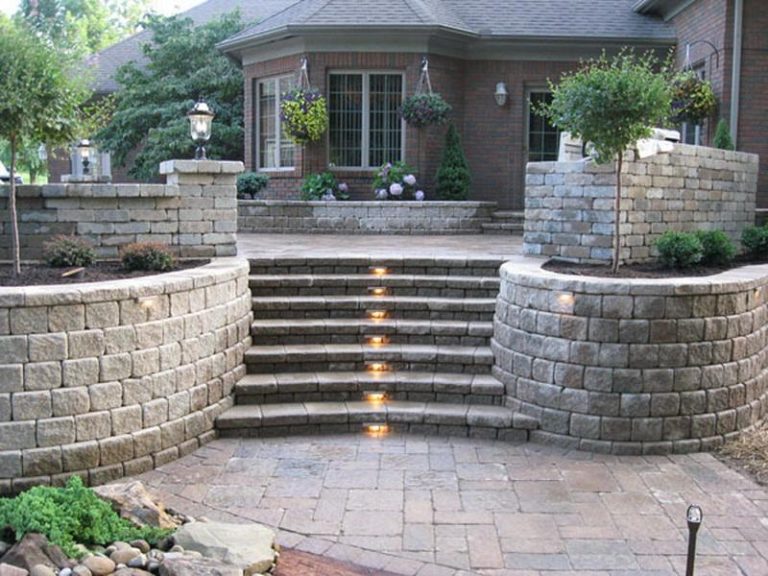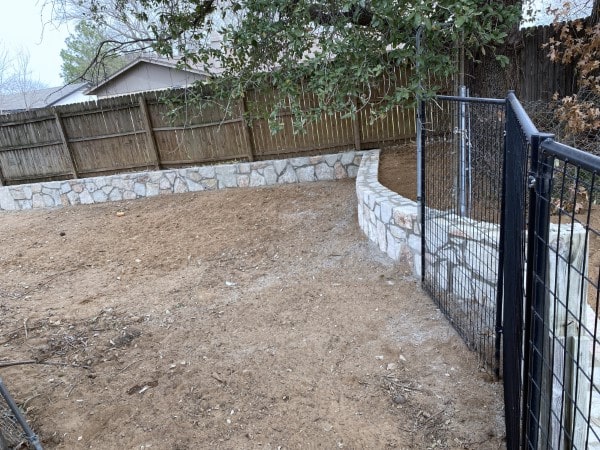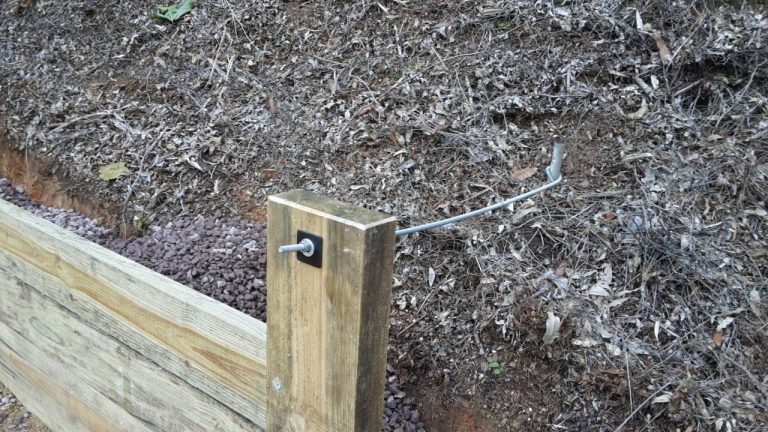Parging Old Stone Basement Walls A Comprehensive Guide
Parging old stone basement walls is a fascinating process, blending historical techniques with modern materials. This guide explores the entire process, from meticulous preparation of the stonework to the application of the chosen parging material, and ultimately, ensuring a durable and aesthetically pleasing finish. Understanding the historical context of parging, alongside the variety of available materials, is key to achieving a successful restoration or new construction project.
We’ll delve into the crucial steps of cleaning and preparing the stone walls, examining common issues, and providing solutions. A detailed look at different parging materials, including traditional options and modern alternatives, will help you make informed decisions. The application process, including necessary tools and techniques, will be thoroughly covered, ensuring a robust and long-lasting result. Finally, we’ll discuss essential maintenance and safety precautions, as well as considerations for various stone types, to guarantee a successful and safe project.
Introduction to Parging Old Stone Basement Walls
Parging, the process of applying a protective and decorative coating to exterior stone surfaces, has a long history, particularly in older structures. This practice, often employed on basement walls, serves multiple crucial functions, including waterproofing, aesthetic enhancement, and the preservation of the underlying stone. Understanding the historical context, materials, and preparation techniques is key to successfully restoring or maintaining these important elements of older buildings.
Parging techniques have been used for centuries to address the challenges of moisture, weathering, and deterioration of stonework. Early parging methods, while simpler than modern approaches, were remarkably effective in preserving structures and enhancing their visual appeal. The longevity of many historic buildings, with parged stonework, stands as a testament to the effectiveness of this technique when properly executed.
Historical Context of Parging

Parging techniques were widely practiced in various cultures throughout history. Evidence of parging can be found in ancient Roman structures, medieval castles, and colonial buildings. The methods evolve, adapting to available materials and construction techniques. This evolution reflects a growing understanding of the challenges of preserving stonework and demonstrates the adaptability and ingenuity of past builders.
Types of Parging Materials
A range of materials has been used for parging, reflecting the availability and characteristics of local resources. Lime-based plasters were a common choice, owing to their ability to adhere well to stone, their breathability, and their relatively low cost. Cement-based parging materials, though more recent, offer greater strength and durability. The selection of a material is critical to the long-term performance and aesthetics of the parged surface.
Importance of Proper Preparation
Thorough preparation of the stone surface is paramount for successful parging. This preparation involves cleaning the stone to remove loose debris, dirt, and any previous coatings. Additionally, ensuring the stone is properly dried and sound is vital. Correctly preparing the surface ensures that the parging material adheres securely and effectively seals the stone. Failure to address these preparatory steps can lead to premature cracking, peeling, and ultimately, the failure of the parging.
Methods for Preparing Stone Surfaces
- Cleaning: Thorough removal of loose debris, dirt, and previous coatings is crucial. This might involve brushing, scraping, or even power washing (with caution to avoid damage). Cleaning ensures good adhesion of the parging material.
- Inspection and Repair: A careful visual inspection of the stone surface should be performed to identify any cracks, voids, or deteriorated areas. These should be repaired with appropriate mortar or patching materials before applying the parging. Addressing these issues is essential to prevent future problems and ensure the longevity of the parging.
- Drying: Allowing the stone to dry completely before applying parging is essential. Dampness can lead to adhesion issues and the potential for mold or mildew growth. The surface should be thoroughly dried for a minimum of 24 hours, or longer depending on the specific conditions.
Preparing the Stone Walls
Thorough preparation of the stone walls is crucial for successful parging. This involves meticulous cleaning, addressing structural issues, and stabilizing the stonework to ensure a durable and aesthetically pleasing finished product. Proper preparation minimizes future problems and maximizes the longevity of the parged surface.
Effective parging relies on a stable and clean substrate. This necessitates careful attention to the condition of the existing stonework, including the removal of loose or deteriorated mortar and stone, as well as the stabilization of the entire structure. This ensures that the parging material adheres properly and avoids premature failure.
Cleaning the Stonework
Proper cleaning of the stonework is essential to remove loose debris, dirt, and any previous coatings that might hinder the adhesion of the parging material. This involves a multi-step process to ensure a clean and stable surface. Begin by removing loose debris with brushes or scrapers, ensuring that no loose fragments of mortar or stone remain. Follow up with a thorough washing using a suitable cleaning solution, and allow the surface to dry completely before proceeding.
Addressing Structural Issues
Old stonework frequently exhibits various issues, including deteriorated mortar, missing stones, and uneven surfaces. Identifying and rectifying these issues is crucial for the long-term success of the parging project. The deteriorated mortar is removed carefully, ensuring that no damage extends to the underlying stone. Missing stones should be replaced with compatible materials, carefully fitted to the existing stonework. Uneven surfaces can be addressed by using suitable levelling compounds to create a consistent and stable base for the parging.
Removing Loose or Deteriorated Mortar and Stone
Removing loose or deteriorated mortar and stone is critical for creating a stable foundation for the parging. This process involves carefully breaking away any loose or crumbling mortar and extracting any detached stones. The removal should be done insystematicallyminimizing damage to the surrounding stonework. Proper tools, such as chisels and hammers, are essential for this step, ensuring the preservation of the structural integrity of the stone.
Stabilizing the Stonework
Stabilizing the stonework is vital to prevent further deterioration and ensure the parging adheres correctly. This step involves various techniques, such as repointing, tuckpointing, or the addition of structural supports, as needed. Repointing involves replacing the existing mortar joints with new mortar, while tuckpointing involves carefully shaping the new mortar to match the existing joint profile. Structural supports, such as metal straps or injected resins, may be necessary in cases of significant structural instability.
Preparation Steps
- Remove loose debris and dirt from the stonework using brushes and scrapers.
- Thoroughly wash the stonework with a suitable cleaning solution, ensuring complete drying.
- Identify and address structural issues, such as deteriorated mortar, missing stones, and uneven surfaces.
- Carefully remove deteriorated mortar and detached stones using appropriate tools.
- Stabilize the stonework using techniques such as repointing, tuckpointing, or structural supports, as required.
- Inspect the prepared stonework for any remaining issues and ensure a clean, stable, and even surface.
Choosing the Right Parging Materials
Selecting the appropriate parging material for old stone basement walls is crucial for both the longevity of the wall and the aesthetic appeal of the finished structure. Careful consideration of the available options, understanding their strengths and weaknesses, and aligning them with the specific needs of the stonework is essential. The chosen material should not only protect the stone but also blend seamlessly with its character.
Comparison of Parging Materials
Different parging materials offer varying degrees of durability, cost-effectiveness, and aesthetic appeal. Understanding these differences is vital for making an informed decision.
Lime-Based Parging
Lime-based parging is a traditional choice, renowned for its breathability and compatibility with natural stone. It allows moisture to escape, preventing dampness that can damage the stonework over time. This approach often results in a natural, subtle finish, blending beautifully with the stone’s texture. However, lime-based parging often requires more skilled application and can be slightly more expensive than cement-based options. A common example of lime-based parging is using a blend of lime, sand, and water, often with additions for color or texture. Modern equivalents include pre-mixed lime-based mortars, offering greater consistency and ease of application.
Cement-Based Parging
Cement-based parging is a widely used and readily available option, primarily due to its affordability. It offers excellent durability and can effectively protect the stone from weathering and water damage. However, cement-based parging often results in a less natural, more uniform finish compared to lime-based alternatives. It can also be less breathable, potentially leading to moisture buildup within the stone if not properly managed. Pre-mixed cement-based parging compounds are common today, providing convenience and often containing additives for increased durability and color.
Other Parging Materials
Alternative options, such as polymer-modified renders, provide a blend of durability and aesthetic versatility. These modern compounds often enhance the overall resistance to cracking and weathering, and offer diverse color and texture options. Acrylic-based parging systems, for instance, can create a smooth, waterproof surface. However, their cost can be higher than both lime and cement-based options. They also may require specialized application techniques.
Material Comparison Table
| Material | Durability | Cost | Aesthetics |
|---|---|---|---|
| Lime-based parging | High | Moderate | Natural |
| Cement-based parging | High | Low | Neutral |
| Polymer-modified renders | Very High | High | Versatile |
| Acrylic-based parging | High | High | Smooth, waterproof |
Applying the Parging
Applying the parging material to the prepared stone basement walls is a crucial step in achieving a durable and aesthetically pleasing finish. Proper application techniques are essential for ensuring a long-lasting, waterproof barrier and a smooth, even surface. Carefully following the steps detailed below will yield the best results.
Application Techniques
The success of the parging project hinges on the meticulous application of the chosen material. Different parging materials necessitate varying application methods. A consistent and even application ensures a uniform thickness, preventing uneven drying and potential cracking. The application should be in thin layers, allowing each layer to dry fully before the next is applied. This method minimizes the risk of cracking and allows for better adhesion to the substrate.
Tools and Equipment
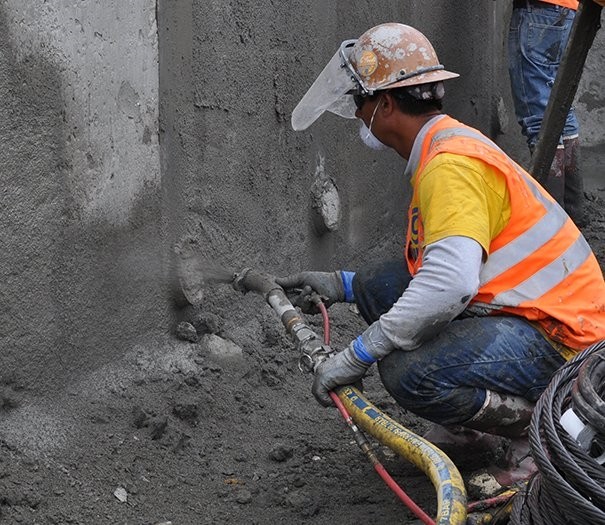
A range of tools and equipment is necessary for efficient and effective parging application. These include, but are not limited to, a parging trowel, a hawk, a float, a spray gun (for certain materials), and a level. A parging pump is frequently used for larger projects to efficiently deliver the material to the application site. The correct tools are crucial for achieving a smooth and consistent finish. Furthermore, appropriate safety gear, such as gloves and eye protection, should be worn throughout the process.
Step-by-Step Procedure
This detailed procedure articulates the key steps for applying parging to stone walls, emphasizing the importance of proper application techniques.
- Preparation: Ensure the stone surface is clean, dry, and free of loose debris. Apply a bonding agent to the stone if recommended by the parging material manufacturer.
- Initial Application: Apply a thin, even layer of parging material using a parging trowel. Work in manageable sections to avoid issues with uneven drying.
- Finishing: Use a float to smooth the applied parging, ensuring a consistent thickness and a level surface. Carefully work the material into the surface texture, filling any gaps or irregularities. This stage is crucial for achieving the desired finish.
- Drying and Subsequent Layers: Allow each layer to dry thoroughly before applying subsequent layers. This is essential to prevent cracking and ensure proper adhesion. Follow the manufacturer’s drying time recommendations for the specific parging material.
- Checking and Adjustments: Regularly check the application for uniformity and ensure the parging adheres to the stone surface. If necessary, make adjustments to address any inconsistencies or imperfections.
- Finishing Touches: Once the parging has fully dried, examine the surface for any final imperfections. If needed, apply a final smoothing coat to create a smooth and even finish. Consider adding a sealant for additional protection.
Key Steps Summary
| Step | Description | Tools/Materials |
|---|---|---|
| Preparation | Clean, dry, and bond the stone surface. | Cleaning tools, bonding agent |
| Initial Application | Apply a thin, even layer of parging. | Parging trowel, hawk |
| Finishing | Smooth the parging with a float. | Float |
| Drying & Subsequent Layers | Allow each layer to dry before applying the next. | None (except monitoring) |
| Checking & Adjustments | Inspect for uniformity and fix imperfections. | Level, float |
| Finishing Touches | Apply final smoothing and sealant (if needed). | Float, sealant |
Finishing and Maintenance
Completing the parging process involves achieving a polished, even surface and safeguarding it from future damage. Proper maintenance is crucial to ensure the longevity of the parged surface, preventing deterioration and extending its aesthetic appeal. This section details techniques for a flawless finish, protection strategies, and vital maintenance steps.
Achieving a Smooth and Even Finish
Achieving a smooth and even parging finish is essential for a visually appealing and durable result. Various techniques contribute to this goal, such as careful application of the parging material, ensuring consistent troweling pressure, and using appropriate tools. The selection of the correct trowel size and type plays a crucial role in achieving a uniform texture and preventing unevenness. Regular checks during the application process allow for adjustments and corrections, minimizing imperfections. For example, a notched trowel can create a textured finish that is less prone to showing minor imperfections compared to a flat trowel. This process requires meticulous attention to detail, enabling a professional-grade result.
Protecting the Parged Surface from Damage, Parging old stone basement walls
Protecting the parged surface is vital for preserving its aesthetic appeal and durability. This involves implementing preventive measures against potential damage sources, such as weathering, impacts, and physical wear. Effective protection strategies should consider the specific environmental conditions of the area, including exposure to moisture, extreme temperatures, and UV radiation. A protective coating, applied after the parging dries, can form a barrier against environmental elements and help resist stains. For example, a properly applied waterproof sealant can safeguard the surface from water penetration and subsequent damage.
Importance of Proper Maintenance
Proper maintenance is crucial for the long-term performance and aesthetic quality of the parged surface. Regular inspection, cleaning, and minor repairs prevent more significant problems from arising, thus extending the life of the parged surface. Addressing issues promptly avoids compounding the problem and minimizes the risk of costly repairs. Consistent maintenance activities can contribute to a consistently beautiful and enduring appearance of the parged surface. For example, regular washing with a soft brush and mild detergent can remove dirt and grime, helping maintain a pristine look.
Recommended Maintenance Tasks
Regular maintenance tasks are essential for maintaining the integrity and appearance of the parged surface. These tasks should be performed at predetermined intervals, based on the environmental conditions and the specific parging material used. A schedule for inspection, cleaning, and minor repairs will contribute to the longevity of the parged surface.
- Regular Inspection: Visual inspections at scheduled intervals should be conducted to identify any signs of damage, such as cracks, chips, or discoloration. Prompt identification and repair of minor issues prevent more significant problems from arising.
- Cleaning: Periodic cleaning with appropriate tools and cleaning agents helps remove dirt, grime, and other contaminants from the surface. Using soft brushes and mild detergents prevents damage to the parged surface.
- Minor Repairs: Addressing minor damage, such as small cracks or chips, as soon as possible prevents further deterioration and extends the life of the parged surface. Using matching repair materials ensures a seamless and visually appealing result.
- Resealing (as needed): Regular resealing of the parged surface is essential, especially in areas prone to moisture or high traffic. This will prevent water penetration and maintain the integrity of the parging.
Considerations for Different Stone Types
Parging old stone basement walls requires a nuanced approach, as different stone types present unique challenges and opportunities. Understanding the characteristics of the stone, particularly its porosity, is crucial for a successful and lasting parging application. This section delves into the specific considerations for various stone types, focusing on how to tailor the parging process to each material.
Different stone types react differently to parging due to variations in their composition and structure. Porosity, the presence of tiny holes and spaces within the stone, plays a significant role in how the parging material adheres and interacts with the substrate. Understanding these variations allows for a more targeted and effective parging application.
Limestone
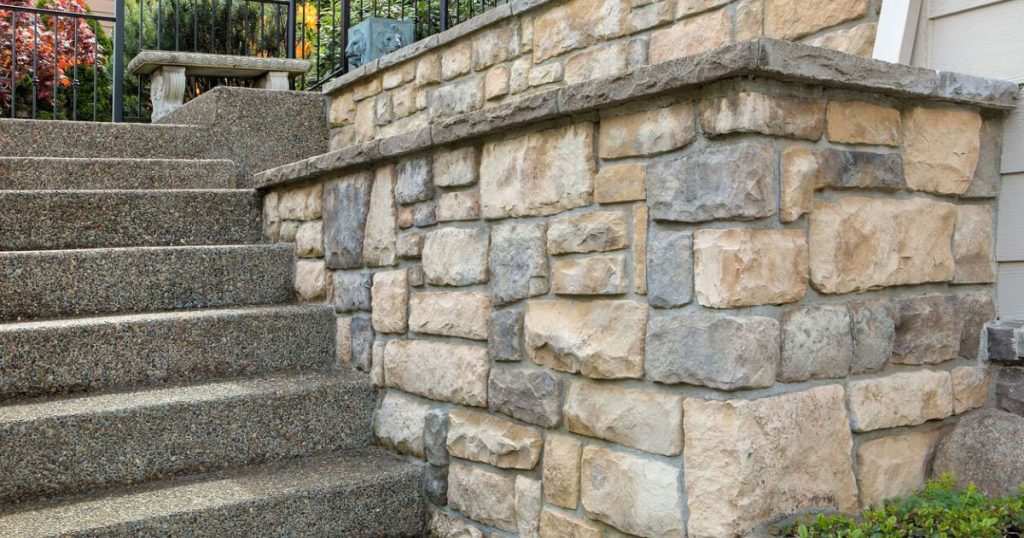
Limestone, a common building material, often exhibits moderate to high porosity. This means the parging material needs to be carefully chosen and applied to ensure proper adhesion and prevent water penetration. A well-prepared surface, including sealing any significant cracks or voids, is critical. The application process should prioritize thorough impregnation of the stone pores to achieve a strong bond. Examples of successful parging projects on limestone often involve using a specialized primer before applying the parging mixture to enhance adhesion and prevent future moisture damage.
Sandstone
Sandstone, known for its varied porosity, requires careful consideration. The presence of sand grains within the stone can influence the parging’s adhesion. Thorough cleaning and surface preparation are paramount, addressing any loose or flaking particles. Impregnating the stone to enhance adhesion is highly recommended for sandstone. Successful projects often involve using a penetrating primer designed for porous stones to create a strong bond between the stone and the parging material. Applying multiple thin coats rather than a single thick coat is a common practice to prevent cracking.
Granite
Granite, a dense and less porous stone, often requires a different approach. Its durability and resistance to weathering often result in a stronger bond with parging. However, the lack of significant porosity means the parging material must still adhere to the stone surface effectively. Thorough cleaning and removal of any loose debris or surface contaminants are crucial for a strong bond. A specialized adhesive or bonding agent might be necessary to ensure proper adhesion on granite surfaces. Successfully parged granite walls often demonstrate excellent longevity and resistance to weathering.
Porosity and Parging Application
Stone porosity significantly influences the parging application process. Highly porous stones require more thorough preparation, including sealing and impregnation, to ensure proper adhesion and prevent moisture issues. Less porous stones, while potentially requiring less preparation, still necessitate careful surface cleaning and a suitable parging material to prevent detachment.
Preparing the Surface Based on Stone Type
The preparation of the stone surface directly impacts the longevity and effectiveness of the parging. For limestone, sealing cracks and voids and thoroughly cleaning the surface are critical. Sandstone necessitates addressing loose particles and applying a penetrating primer. Granite, despite its density, needs thorough cleaning to remove any contaminants for optimal adhesion.
Safety Precautions
Parging old stone basement walls, while aesthetically pleasing, presents potential hazards if safety precautions are not diligently observed. Proper preparation and adherence to safety guidelines are paramount to ensuring a safe working environment and preventing accidents. Understanding the potential dangers and implementing appropriate safety measures are crucial for a successful and injury-free project.
Careful consideration of the potential hazards and implementation of the appropriate personal protective equipment (PPE) is critical. The work involves handling potentially heavy materials, working at heights, and exposure to dust and chemicals.
Essential Personal Protective Equipment (PPE)
Implementing proper personal protective equipment (PPE) is vital for mitigating risks and protecting workers from potential hazards. This includes wearing appropriate safety gear, including but not limited to eye protection, respirators, and work gloves.
- Eye Protection: Safety glasses or goggles are essential to protect the eyes from flying debris, dust, and potential splashes of parging materials.
- Respiratory Protection: Parging materials can generate dust and fumes. A respirator appropriate for the specific materials used is necessary to prevent respiratory issues. If the dust is very fine, a high-efficiency particulate air (HEPA) respirator may be needed.
- Hand Protection: Heavy-duty work gloves are essential for handling materials and preventing cuts, abrasions, and chemical exposure. Ensure gloves are appropriate for the specific parging materials being used.
- Foot Protection: Steel-toe safety boots are recommended to protect feet from falling objects and other hazards.
- Hearing Protection: Construction activities can produce significant noise levels. Earplugs or earmuffs are crucial to protect hearing.
Potential Hazards and Mitigation Strategies
A thorough understanding of potential hazards is essential for their effective mitigation. Accidents can be avoided by proactively identifying potential risks and developing strategies to prevent them.
- Falling Objects: Proper scaffolding and fall protection measures are essential to prevent falls from heights. Ensure that all materials are securely stored and handled to avoid dropping objects on workers below.
- Dust and Fumes: Parging materials can generate harmful dust and fumes. Appropriate respiratory protection and ventilation are necessary. Proper ventilation of the work area is critical to mitigate airborne particulates.
- Chemical Exposure: Some parging materials contain chemicals that can cause skin irritation or other health issues. Ensure appropriate handling procedures are followed, and proper protective clothing is used.
- Slips, Trips, and Falls: Construction sites can have uneven surfaces and cluttered areas. Regular inspections and maintenance of the work area can prevent slips, trips, and falls. Ensuring the work area is kept clean and free of debris is crucial.
- Working with Heavy Materials: Lifting heavy materials can lead to back injuries. Use proper lifting techniques, and consider using mechanical lifting equipment when appropriate. Using appropriate lifting techniques and assistance from fellow workers is vital when moving materials.
Safety Guidelines
Implementing safety guidelines will further reduce the risk of accidents and injuries during the parging process.
- Pre-Work Inspection: Conduct a thorough inspection of the work area to identify potential hazards before starting the parging process. Ensure the area is free of obstructions and unsafe conditions.
- Proper Material Handling: Handle all materials carefully to prevent dropping or spilling them. Ensure that materials are stored securely and appropriately.
- Appropriate Scaffolding and Fall Protection: Use proper scaffolding and fall protection equipment if working at heights. Inspect the scaffolding and fall protection systems before use.
- Proper Ventilation: Maintain adequate ventilation to prevent the accumulation of dust and fumes. Ensure proper ventilation in the work area to mitigate respiratory hazards.
- Emergency Procedures: Establish clear emergency procedures and ensure that all workers are familiar with them. Knowing the emergency procedures and evacuation routes is vital in case of an accident.
Historical Examples and Case Studies: Parging Old Stone Basement Walls
Parging, the application of a protective layer to stone surfaces, has a rich history, evident in numerous well-preserved structures across the globe. Examining these historical examples provides valuable insight into the techniques, materials, and longevity of parging in different contexts. Understanding how past builders approached parging offers crucial lessons for contemporary practitioners.
Examining historical buildings reveals the varied approaches to parging, offering insights into the evolution of techniques and the influence of local materials and craftsmanship. The longevity of parging in these structures, often spanning centuries, underscores the effectiveness of the process when executed properly. These examples demonstrate how historical builders achieved long-lasting results through meticulous attention to detail.
Examples of Historical Buildings Utilizing Parging
Numerous historical structures showcase the application of parging techniques, including castles, monasteries, and public buildings. These structures provide valuable case studies, showcasing how different cultures and eras approached this technique. The durability and aesthetic appeal of these examples are often remarkable.
Characteristics of Buildings with Parged Stonework
Parged stonework in historical buildings often exhibits a smooth, uniform surface, contrasting with the often rough texture of the underlying stone. The application of parging was integral in creating a more refined aesthetic and protecting the stone from weathering. The preservation of the underlying stone and its longevity is often attributed to the careful application of parging.
Methods Used for Parging in Historical Examples
The methods for parging varied across cultures and periods. Early techniques often involved locally sourced materials, such as lime, sand, and aggregates. The exact proportions and application methods differed significantly based on the specific building materials and environmental conditions. These variations are reflected in the diverse appearance and durability of parged stonework in different historical contexts.
- Roman Structures: Roman builders employed complex techniques, often involving carefully selected lime mortars and aggregates for the parging layer. This resulted in a strong, durable layer that effectively protected the stonework. The widespread use of Roman cement further enhanced the long-term durability of their structures.
- Medieval Castles: Medieval castles frequently used lime-based parging to seal and protect stone walls. The techniques, while less complex than Roman methods, were still effective in preserving the structures against the elements. This is evident in the many surviving medieval castles, where the parged stonework has remained intact for centuries.
- Renaissance Palaces: Renaissance architects often sought a smooth, polished finish for parging. This frequently involved meticulous application and potentially the use of specialized pigments for decorative effects. The emphasis on aesthetic refinement is evident in the surviving examples of Renaissance palaces.
Longevity of Parging in Historical Structures
The longevity of parging in historical structures often depends on several factors, including the quality of the materials used, the application techniques, and the environmental conditions. Parging can last for centuries if properly executed. The success of parging hinges on selecting appropriate materials and applying them in a manner that effectively seals and protects the stone substrate.
- Material Composition: The quality of the lime and aggregates significantly influenced the longevity of the parging layer. High-quality materials, properly mixed and applied, formed a robust, protective barrier against weathering.
- Application Technique: Meticulous application techniques, ensuring even coverage and minimizing cracks or voids, were crucial for long-term performance. Proper layering and thorough curing were critical aspects of successful parging.
- Environmental Conditions: Exposure to extreme weather conditions, such as heavy rain, frost, or high winds, could impact the longevity of parging. Understanding the local climate and implementing appropriate techniques for protection from these factors was important.
Final Thoughts

Source: shunshelter.com
In conclusion, parging old stone basement walls is a multifaceted undertaking that requires careful consideration of historical context, material selection, and application techniques. By understanding the detailed steps involved in preparation, material selection, application, and maintenance, you can achieve a durable and aesthetically pleasing result. This comprehensive guide provides a robust foundation for anyone embarking on this project, enabling them to restore or create a beautiful and lasting structure. Remember, safety and proper technique are paramount to a successful outcome.
